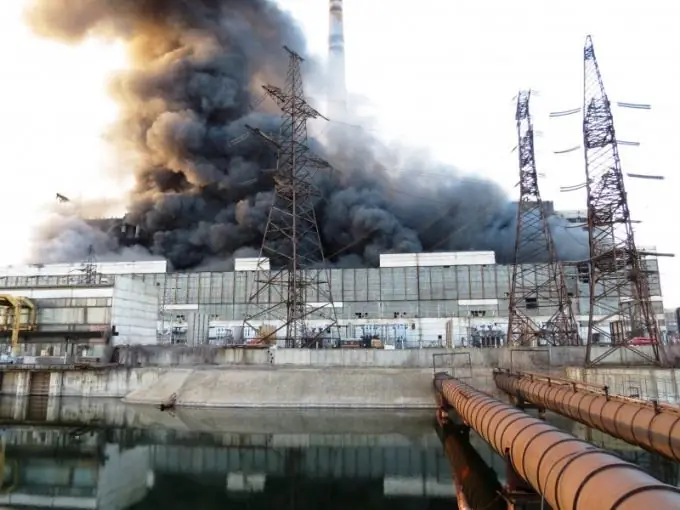- Author Nora Macey [email protected].
- Public 2023-12-16 10:17.
- Last modified 2025-01-23 08:47.
All emergencies are divided into two categories - natural and man-made. And if the forces of nature are basically not subject to human influence, then man-made disasters often occur due to the fault of people and their inept actions, or an irresponsible attitude to the observance of safety rules.

Classification of emergencies
The unfavorable situation that has developed in the territory of a certain area as a result of an accident and entailed a threat to the life and health of people, causing material damage and violating the ecological situation, is included in the category of man-made disasters. According to their severity, these events are classified as small, large and large-scale.
Depending on the area of distribution, emergency situations are divided into five types - from local, which do not spread beyond the site, to global, or transboundary. Such a formulation is given if the consequences of an accident go beyond the borders of one state. It should be noted that emergencies include only those man-made disasters, as a result of which there were human casualties, the possibility of normal life was disrupted and significant material losses were obtained.
Types of emergencies
Depending on the cause, the disasters that have occurred are divided into several types. Accidents of all types of transport that occurred on roads and railways, bridges, crossings and tunnels are classified as transport types. It also includes plane crashes that happened both at airports and outside them, and accidents on main pipelines.
The second type of emergency includes explosions and fires that have already occurred at industrial or socio-cultural facilities, or if only there is a threat of their occurrence. In this case, warehouses of fuels and lubricants and explosives, chemical and radiation facilities and places of mass gathering of the population pose a particular danger. Accidents at storage depots for weapons and explosives and the detection of unexploded ordnance are taken under special control.
The third type of man-made disasters includes accidents with the release or threat of release of chemical, biologically active and radioactive substances, accidents at nuclear fuel cycle facilities and during nuclear tests.
A separate point is the sudden collapse of buildings of any purpose, the destruction of transport communications and their elements. Long-term interruptions in the supply of electricity to consumers caused by accidents at power plants or damage to electric power systems are also considered man-made disasters. The same list includes the breakthrough of dams and dams, the failure of treatment facilities and the release of industrial gases with a large amount of pollution into the atmosphere.




